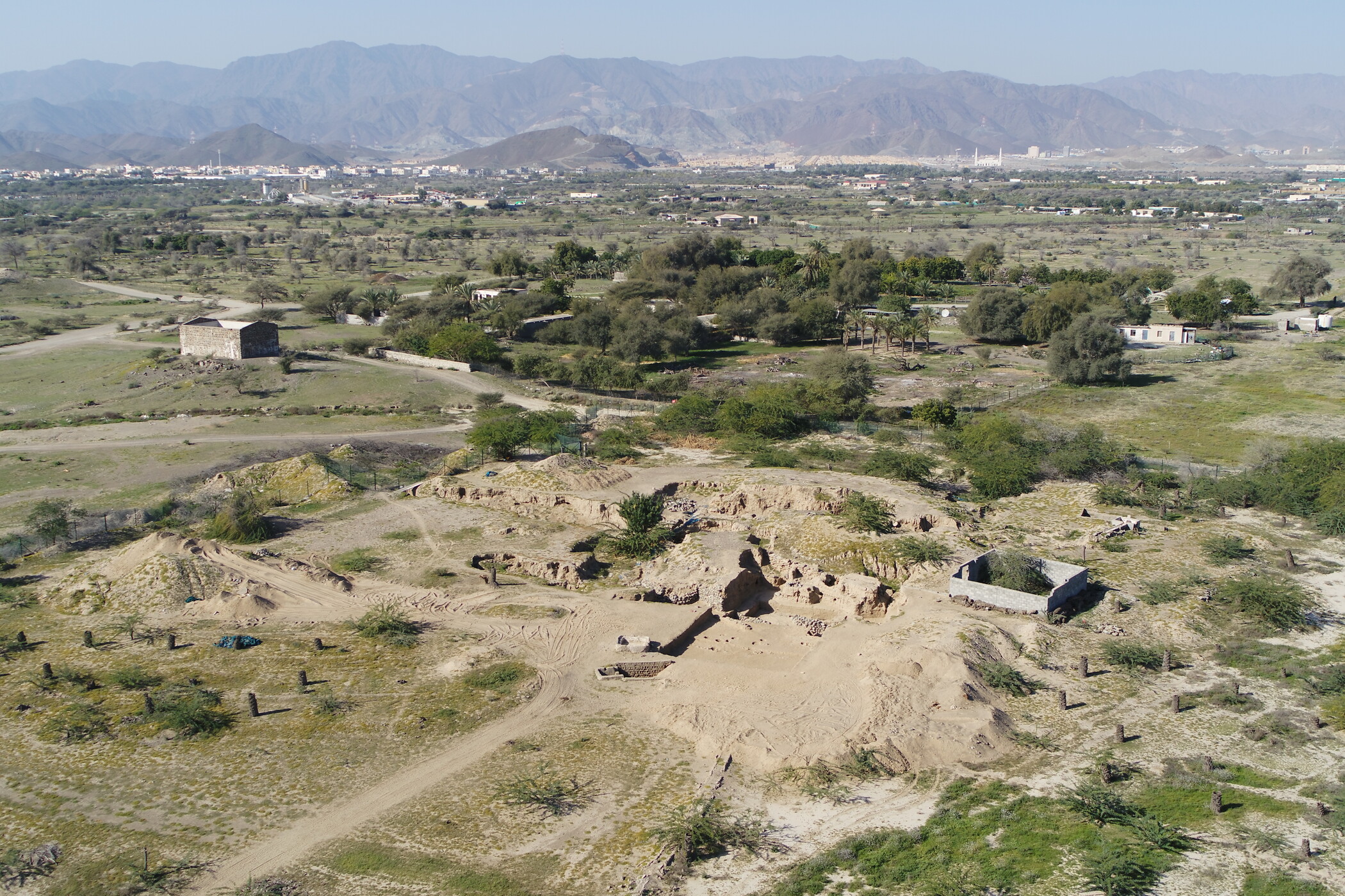Kalba: Research on Bronze Age Trade Networks and Resource Managemet Strategies
Research question
Around 4500 years ago, extensive trade networks can be detected for the first time, reaching from the Indus region to the Aegean Sea. In addition to land routes, maritime waterways appear to have played an important function in this regard. This is evidenced by numerous sites at important nodes of possible routes, where objects made of exotic and precious raw material (carnelian, lapis lazuli, gold) have been found. Presumably, the Gulf region already served as a nexus between East and West about 4500 years ago.
Research objectives
Since 2019, excavations have been carried out on the south-eastern Arabian Peninsula by the Austrian Academy of Sciences (OeAW) to investigate these early trade routes. On the one hand, basic research will focus on the continuation of excavations, the establishment of a solid chronological framework through radiocarbon dates, and the reconstruction of prehistoric, environmental conditions (e.g., through archaeobotany, marine reservoir effect). On the other hand, the project continues investigations focusing on the possible local production of elaborately manufactured finished products from raw materials from UAE deposits, such as beads made from semi-precious stones or stone vessels. To answer these questions, the project »Lithic Resources at Kalba (LITRAK)« was initiated. The research will help to provide insights into the daily lives of the settlement’s inhabitants and their raw material procurement strategies and interaction sphere. Finally, the generated data will be used to clarify the question of whether the coastal site of Kalba, due to its geostrategic location, was not only a trading post but also a production center of regional or even supra-regional importance.
Methodology
Occupied from the Early Bronze Age to the Iron Age (c. 2500-600 BC), the coastal site of Kalba (Emirate of Sharjah) on the Gulf of Oman is a key site for answering important socio-economic questions, such as prehistoric resource management and early supra-regional trade relations. Kalba is currently being investigated by an international team of experts directed by B. Horejs (OeAI/OeAW) und C. Schwall (previously OeAI, now LEIZA) together with the Sharjah Archaeology Authority (SAA) of the Emirate of Sharjah, in order to integrate the results into broad studies of early networks.
Of particular interest are the spectacular prehistoric walls of a monumental tower from the late 3rd millennium BC, Umm an-Nar culture, excavated to a depth of about 7 m below the surface but once certainly visible from afar. Imports originating from Mesopotamia, present-day Iran, and the Indus region suggest that the site was a trading post in an extensive economic network more than 4500 years ago. Research suggests that trade goods may have included copper, but also high-quality cherts and semi-precious stones, such as agate and carnelian. Preliminary scientific analyses of the archaeological finds in the framework of the LITRAK project prove that raw materials reached the settlement from more than 50 km from the hinterland via caravan routes through the Hajar Mountains and were probably exported by ship.
Around 4500 years ago, far-reaching trade networks can be detected for the first time, reaching from the Indus region to the Aegean Sea. Within the project, these networks are investigated by a case study at the site of Kalba on the south-eastern Arabian Peninsula. The fieldwork will provide insights into raw material procurement strategies and interaction spheres of a prehistoric coastal settlement. In particular, the relevance of lithic resources and the importance of Kalba as a node within maritime and terrestrial trade networks will be clarified.




